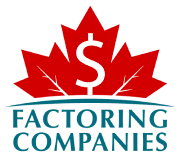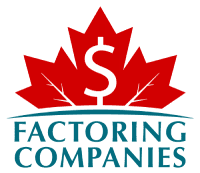
Running a business means constantly juggling finances to keep operations smooth and growth on track. Traditional loans are a common solution, but they often fall short when it comes to flexibility. Whether you’re dealing with seasonal cash flow gaps, rapid growth, or unexpected expenses, understanding options like invoice factoring and lines of credit can offer the financial flexibility your business needs. On this page, we’ll explore how these solutions can help you navigate your unique financial challenges and keep your business moving forward.
Financial Flexibility in Business Financing Options
Flexible funding solutions can be a game-changer for many small businesses, providing advantages that traditional loans often can’t match. To better understand the advantages of flexible funding, it’s helpful to compare invoice factoring with traditional bank lending options. Below, we’ll explore a few situations when a business might prefer flexible funding over a traditional loan.
Seasonal Business
Imagine you run a business that experiences significant seasonal fluctuations, such as a landscaping company. During the spring and summer, your cash flow needs to spike as you hire more workers, buy more supplies, and take on numerous projects. In the winter, your business slows down considerably. A traditional loan requires consistent repayments regardless of your cash flow situation, which can be challenging during off-peak seasons. Flexible financing options like invoice factoring or a line of credit can offer the necessary financial flexibility in business financing options to manage these fluctuations effectively.
Rapid Growth
Picture a tech startup that has landed several large contracts but needs immediate cash to scale up operations, hire more staff, and purchase equipment. Traditional loans can take time to process and often require a strong credit history, which many startups lack.
Unforeseen Expenses
Imagine a small manufacturing company that faces unexpected equipment breakdowns that require immediate repair or replacement to keep production lines running. Waiting for a traditional loan approval can be detrimental, leading to production delays and lost revenue. The speed of funding associated with options like factoring and lines of credit is invaluable in situations like these.
How a Business Line of Credit Works
A business line of credit (LOC) is a flexible financing option that provides businesses with access to a predetermined amount of money that they can draw from as needed. Below, we’ll provide a quick breakdown of how a line of credit works.
Approval and Limit
- Application: The business applies for a line of credit from a financial institution, such as a bank or credit union.
- Limit: Upon approval, the lender sets a credit limit based on factors like the business’s creditworthiness, revenue, and overall financial health.
Accessing Funds
- Drawing Funds: The business can draw from the line of credit up to the approved limit, similar to using a credit card.
- Using Funds: Funds can be accessed as needed, either through online transfers, checks, or special credit cards linked to the LOC.
Repayment
- Interest: Businesses pay interest only on the amount they borrow, not the entire credit limit.
- Payments: Repayments can be made in flexible amounts, with the option to pay down the balance and borrow again as needed, making it a revolving credit facility.
Interest Rates and Fees
- Rates: Interest rates for lines of credit are typically variable, meaning they can fluctuate based on the prime rate and other factors.
- Fees: Depending on the lender’s terms, there may be additional fees, such as annual or draw fees.
Benefits of a Business Line of Credit
- Flexibility: A LOC provides businesses with the flexibility to borrow only what they need when they need it, and repay it as they can, making it an ideal solution for managing cash flow.
- Access to Capital: It ensures access to capital for various needs, such as covering operating expenses, purchasing inventory, or handling unexpected costs.
- Cost-Effective: Businesses only pay interest on the funds they actually use, which can be more cost-effective than taking out a lump sum loan.
How Invoice Factoring Works
Invoice factoring is a financial solution where a business sells its accounts receivable (invoices) to a third-party company (the factor) at a discount in exchange for immediate cash. Here’s a quick look at how it works and its benefits.

Factoring Process
- Issuing Invoices: A business provides goods or services to its customers and issues invoices with payment terms, typically 30 to 90 days.
- Selling Invoices: Instead of waiting for customers to pay, the business sells these invoices to a factoring company.
- Receiving Funds: The factoring company advances a percentage of the invoice value, usually 60 to 95 percent, to the business immediately.
- Customer Payment: The customers pay the factoring company directly according to the original invoice terms.
- Final Payment: Once the factoring company receives the full payment from the customers, it releases the remaining balance to the business, minus a factoring fee.
Approval and Limit
- Application: The business applies for factoring with a factoring company.
- Assessment: The factoring company assesses the creditworthiness of the business’s clients and determines how much credit can be extended without accepting excessive risk.
- Agreement: The business works with the factoring company to set up an agreement that works for both parties. This may involve increasing reserves to reduce costs, maximizing advances to boost working capital, eliminating or increasing minimum volume, and other strategies to ensure the business’s needs are met.
Accessing Funds
- Immediate Deposit: Cash is deposited as soon as the invoice is validated. In most cases, this means it’s available for withdrawal within two business days. However, some factoring companies offer same-day payments.
- Using Funds: The business can use funds however it wishes. If additional capital is required, the business can factor more invoices to reach its liquidity goal.
Repayment
- Payments: The balance is cleared when the customer pays the invoice. The business does not accrue any debt. In situations where the customer does not pay the invoice, the next steps will be determined based on whether the business has a recourse or non-recourse factoring agreement.
- Recourse Factoring: In recourse factoring, the business is responsible for ensuring the factoring company does not experience a financial loss. If a customer doesn’t pay, the factoring company will usually accept another invoice in place of the first.
- Non-Recourse Factoring: In non-recourse factoring, the factoring company accepts the loss when a customer doesn’t pay. This option is less popular than recourse factoring because it’s a little more expensive, and the preliminary credit checks help reduce the likelihood of non-payment.
Interest Rates and Fees
- Rates: Factoring rates are determined before an invoice is factored and typically range between one and five percent of an invoice’s value.
- Fees: There may be additional fees, such as withdrawal fees, processing fees, or credit check costs that are passed on to the business. Not all factoring companies charge them, so it’s important to review the contract thoroughly.
Benefits of Invoice Factoring
- Flexibility: Businesses can tap into factoring as needed. Funding automatically scales as the business grows, too.
- Immediate Cash Flow: Businesses get immediate access to cash, improving liquidity and allowing them to meet their financial obligations without delay.
- Creditworthiness: Approval for factoring is based on the creditworthiness of the business’s customers, not the business itself, making it accessible for businesses with limited credit history.
- Outsourced Collections: The factoring company often takes over the collections process, saving the business time and resources.
Comparing Flexibility: Line of Credit and Factoring
Comparing the flexibility of a line of credit and invoice factoring can help businesses understand which financing option might best suit their needs. Here’s a detailed comparison of both in terms of flexibility.

Eligibility and Approval
Getting approved for factoring is easy and is largely contingent on the creditworthiness of the business’s customers. Getting approved for a LOC is contingent on the business’s creditworthiness and involves a detailed application and review process.
Limits and Access to Funds
With factoring, businesses have access to unlimited funds, based on the volume of their invoices and creditworthiness of their customers. With a LOC, businesses are awarded a limit based on their creditworthiness.
Repayment
With factoring, businesses have no debt to pay back. With a LOC, businesses pay back what they borrow with interest. This is done with a rigid repayment schedule and typically requires monthly repayments.
Costs
The median variable interest rate on a line of credit presently sits around nine percent, per Reserve Bank reports. However, some have APRs as high as 60 percent. Meanwhile, average factoring rates are between one and five percent of an invoice’s value.
Advantages of Factoring Over Line of Credit
There are many times when factoring may be a better option than leveraging a line of credit. We’ll review a few examples below.
Rapid Business Growth
Factoring is often better when a company is experiencing rapid growth and needs immediate cash to fulfill large orders or expand operations. It provides quick access to cash based on outstanding invoices, allowing the business to scale up without waiting for customer payments.
Long Payment Terms from Customers
When a business has customers with long payment terms (30, 60, or 90 days) and needs cash to cover operational expenses, factoring bridges the cash flow gap by converting unpaid invoices into immediate funds, ensuring the business can meet its financial obligations without delay.
Limited Credit History
A new or small business with a limited or poor credit history that is unable to secure a traditional loan or line of credit will generally do better with factoring. This is because approval for factoring is based on the creditworthiness of the business’s customers, not the business itself, making it accessible for those with less established credit. This is especially relevant for entrepreneurs operating as sole proprietors, where the business’s structure can influence both financing options and risk. Understanding the pros and cons of sole proprietorship can offer valuable perspective when evaluating funding strategies such as factoring.
Seasonal Businesses
Factoring is often better for a business with seasonal fluctuations in revenue that needs cash to prepare for busy seasons or sustain operations during slow periods because it provides flexible funding based on current sales, ensuring the business has the cash flow needed to manage seasonal demands effectively.
Unexpected Expenses
Factoring is typically better when a company faces unexpected expenses, such as equipment repairs or emergency purchases, and needs immediate funds. This is because it offers quick access to cash without the lengthy approval process of traditional loans, allowing the business to address urgent financial needs promptly.
Focus on Operations
When a business wants to focus on core operations and reduce the time spent on managing accounts receivable and collections, factoring is better because factoring companies often handle the collections process, freeing up the business’s resources and allowing them to concentrate on growth and customer service.
Experience the Flexibility of Factoring Firsthand
Factoring is one of the most accessible and flexible business funding solutions available. We’re happy to match you with a factoring company that understands your business and wants to be an instrumental partner in your growth. To take the first step, request a complimentary factoring quote.
Line of Credit vs. Factoring FAQs
How does invoice factoring work for small businesses?
Small businesses sell their outstanding invoices to a factoring company. The factor advances a percentage (typically 60 to 95 percent) of the invoice value upfront. Once the customer pays the invoice, the factor releases the remaining balance minus a factoring fee. This provides immediate cash flow without waiting for customer payments.
What are the benefits of using a line of credit for business funding?
A line of credit offers flexible access to funds, allowing businesses to draw as needed up to a pre-approved limit. It’s ideal for managing cash flow, covering unexpected expenses, and seizing growth opportunities. Interest is only paid on the amount borrowed, and the credit can be reused as it is repaid.
When should a business consider invoice factoring over a line of credit?
Businesses should consider invoice factoring when they need immediate cash flow, have long payment terms from customers, or have limited credit history. Factoring is also beneficial for companies experiencing rapid growth or facing unexpected expenses, as it provides quick access to funds based on customer invoices.
How quickly can a business access funds through invoice factoring?
Businesses can typically access funds within 24 to 48 hours after selling their invoices to a factoring company. This quick turnaround makes factoring an attractive option for businesses needing immediate cash flow to cover operational expenses or invest in growth.
What are the costs associated with invoice factoring?
The primary cost of invoice factoring is the factoring fee, which usually ranges from one to five percent of the invoice value. This fee depends on factors like the creditworthiness of customers, invoice amount, and payment terms. There may also be additional fees for services like credit checks or collections.
How is the creditworthiness of customers evaluated in invoice factoring?
In invoice factoring, the factoring company evaluates the creditworthiness of the business’s customers rather than the business itself. They assess customers’ payment history, financial stability, and overall credit risk to determine the likelihood of invoice payment and set factoring terms accordingly.
What are the eligibility requirements for obtaining a line of credit?
Eligibility for a line of credit typically depends on the business’s credit history, financial health, revenue, and sometimes the owner’s personal credit score. Lenders require documentation like financial statements, tax returns, and business plans to assess creditworthiness and set the credit limit.
Can startups qualify for invoice factoring?
Yes, startups can qualify for invoice factoring as approval is based on the creditworthiness of their customers, not the business itself. This makes factoring an accessible option for new businesses with limited credit history but strong customer relationships.
How does a line of credit help in managing cash flow?
A line of credit helps manage cash flow by providing flexible, reusable funds that businesses can draw from as needed. This is useful for covering day-to-day operational expenses, handling emergencies, and smoothing out cash flow fluctuations without the need for constant loan applications.
What are the pros and cons of factoring and lines of credit?
In business finance, choosing between factoring and a line of credit involves weighing their pros and cons. Factoring provides immediate cash flow based on invoices and is accessible even with limited credit history, but it can be expensive due to factoring fees and may affect customer perception. A line of credit offers flexible access to funds and typically lower costs, but it requires good credit for approval and must be repaid with interest, which can vary.
How does a line of credit versus factoring for cash flow work?
When evaluating financing flexibility, factoring vs. LOC highlights different advantages. A line of credit provides a pre-approved limit that businesses can draw from as needed, paying interest only on the amount used, making it ideal for managing expenses and short-term needs. Factoring converts outstanding invoices into immediate cash, offering instant liquidity without debt repayment, which is beneficial for businesses with long payment terms needing quick cash flow.
What should businesses consider when choosing between factoring and a line of credit?
In business finance, choosing between factoring and a line of credit depends on your specific needs. For immediate cash flow tied to invoices, factoring is advantageous, especially for businesses with long payment terms. For flexible, reusable funds, a line of credit is better, offering a pre-approved limit that can be drawn from as needed. Both have unique benefits depending on your cash flow requirements and credit situation.
How do financial solutions for businesses like LOC vs. factoring compare?
Financial solutions for businesses, like LOC vs. factoring, cater to different needs. A line of credit offers flexibility and lower costs for businesses with good credit, while factoring provides immediate cash flow based on invoice value, ideal for those with limited credit history. Evaluating your business's financial situation will help determine which option best suits your cash management needs.
What are the key decision factors: line of credit or factoring?
Key decision factors when choosing between a line of credit or factoring include your business’s credit history, cash flow needs, and repayment preferences. A line of credit requires strong credit and offers flexible, reusable funds with interest only on what’s used. Factoring is based on the creditworthiness of your customers and provides immediate cash flow from invoices without creating debt.

About Factoring Companies Canada
Related Insights
Get an instant factoring estimate
Factoring results estimation is based on the total dollar value of your invoices.
The actual rates may differ.
CLAIM YOUR FREE FACTORING QUOTE TODAY!
PREFER TO TALK?
You can reach us at
1-866-477-1778
Get an instant factoring estimate
Factoring results estimation is based on the total dollar value of your invoices.
The actual rates may differ.
CLAIM YOUR FREE FACTORING QUOTE TODAY!
PREFER TO TALK? You can reach us at 1-866-477-1778











